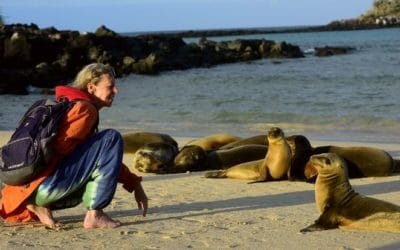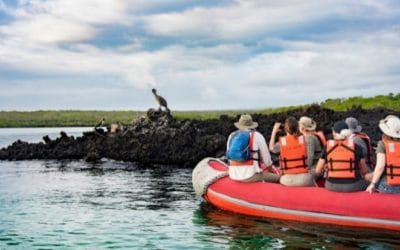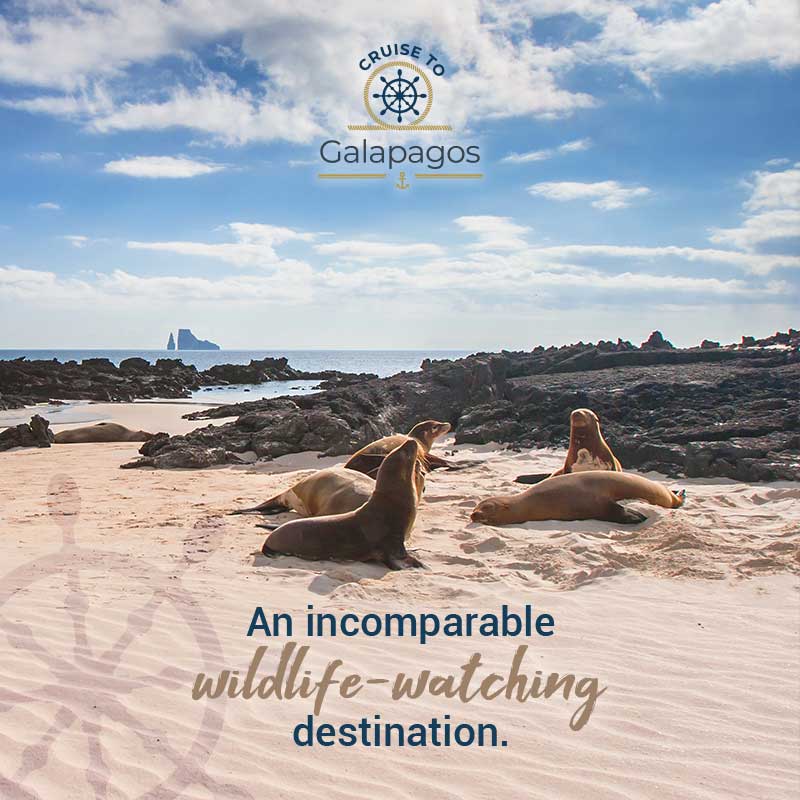Best Time to visit the Galapagos Islands
Stay up to date with our most recent news and updates
One of the most frequently asked questions among those who wish to travel to the Galapagos Islands on their next vacation is, what is the best time to visit the Galapagos Islands? Although it sounds trite, the best time to visit Galapagos is any time of the year. During all months, from January to December, you will always be able to see exotic species and enjoy the most pleasant weather in the Ecuadorian Pacific.
As experts on the Galapagos Islands, we would like to share valuable information about the climate in the Galapagos Islands and its different seasons throughout the year, which will be useful for you to choose the best time to visit.
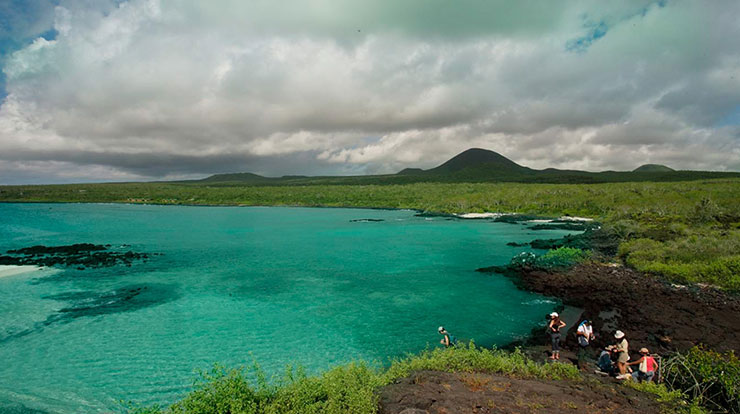
Floreana Island cormorant
You should know that in the Galapagos Islands there are two very distinct climatic seasons. On the one hand, we have the hot and humid season and on the other hand, the cold and dry season. Below, we will tell you more about each of them.
WARM AND WET SEASON IN GALAPAGOS:
The warm and wet season in the Galapagos Islands generally runs from January to June. If you decide to visit the islands during these months, you will enjoy pleasant warm weather with a high probability of rain, but do not worry, this does not mean that you will not be able to enjoy your vacation.
Rainfall during the warm and wet season in Galapagos is usually at night, and sporadically during the day. Therefore, you will be able to take advantage of your full-day exploring this wonderful natural destination, considered one of the best-preserved and beautiful on the planet.
Important facts about the warm and wet season in Galapagos.
- Higher rainfall and warmer temperatures, land: 73 °F (ca. 23 °C) to 88 °F (ca. 31 °C) / water: 72 °F (ca. 22 °C) to 75 °F (ca. 24 °C).
- Daily, intermittent, refreshing drizzle.
- Bright sunlight, vibrant colors, sweltering heat.
- Lush vegetation extends to the aridest highlands.
COOL AND DRY SEASON IN GALAPAGOS:
The cool and dry season in Galapagos generally runs from July to December. Visiting Galapagos during these months is ideal for those seeking a climate that is neither too hot nor too cold.
Days during the Galapagos’ cool and dry season are often cloudy and dry. Light drizzle can be expected sporadically and for only a few minutes, as well as cloudless and sunny moments. Don’t worry about the clouds, during these months, you will also be able to enjoy the islands and probably with fewer tourists than in the warm and wet season.
Important facts about the cool and dry season in Galapagos.
- Cool and very comfortable weather conditions, land: 68 °F (ca. 20 °C) to 79 °F (ca. 26 °C) / water: 70 °F (ca. 21 °C) to 73 °F (ca. 23 °C).
- Very active marine life due to increased food supply.
- Strengthening of the Humboldt Current, which means more nutrient-rich waters and helps maintain the rich biodiversity of the islands.
As you may have noticed, the climate in the Galapagos Islands is very pleasant all year round. But what about the Galapagos wildlife? Here, we tell you briefly.
WHEN IS THE BEST TIME TO SEE WILDLIFE IN GALAPAGOS?
Unlike most wildlife destinations in the world, in Galapagos you can enjoy the presence of wildlife both on land and underwater, all year round.
Below is a month-by-month guide to Galapagos that will help you discover your favorite species in action. For more details, we invite you to read our article about the Galapagos Islands month by month.
When to see land fauna in Galapagos?
The best time to see land species in Galapagos is during the warm and wet season.
During these months, the Galapagos weather is perfect for new plants to bloom in abundance, greening the landscape. Therefore, food for some species on land is abundant, which generates more activity.
The warm season also gives you the opportunity to observe the giant Galapagos tortoise eggs hatching in the breeding centers of Santa Cruz, Isabela and San Cristobal breeding centers or the colorful marine and land iguanas in their nesting season.

Marine Iguana changing their color skin on the warm season.
When to see marine fauna in Galapagos?
The cold and dry season in Galapagos brings with it a significant increase in marine fauna. Although the water tends to be colder, snorkeling and scuba diving allow you to enjoy incredible underwater spectacles.
In addition, sea-feeding birds often enjoy this time of year, as they can find food in abundance, both for themselves and their young. On the other hand, in early August you can see American flamingos and blue-footed boobies start their elegant mating rituals.
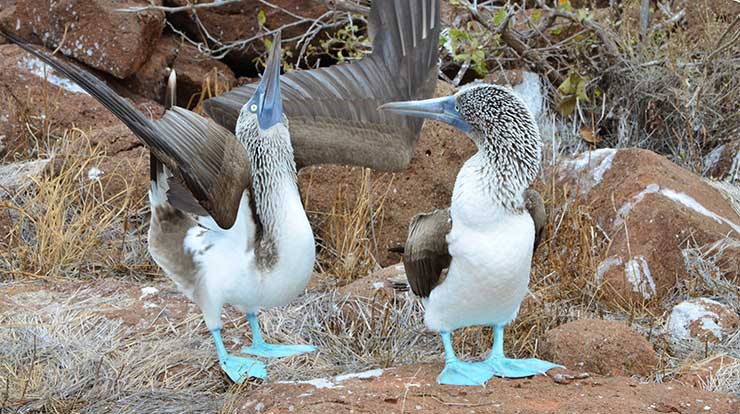
The Blue-footed boobies initiating elegant mating rituals.
UPWELLING IN GALAPAGOS
Upwelling is a sudden underwater counter-current that pushes oxygen- and nutrient-rich waters from the deep waters to the surface. Occurs between July and December. During these natural events, water temperatures in Galapagos are cooler and range from 70 °F (ca. 21 °C) to 73 °F (ca. 23 °C).
The highlight of the Galapagos upwelling is that visitors will be able to observe remarkable marine activity. If you are a snorkeling and diving enthusiast, you can observe extensive and colorful schools of tropical fish, marine iguanas feeding underwater, schools of sharks and even some whales that take advantage of this time of year to feed near the equatorial and Galapagos coasts.
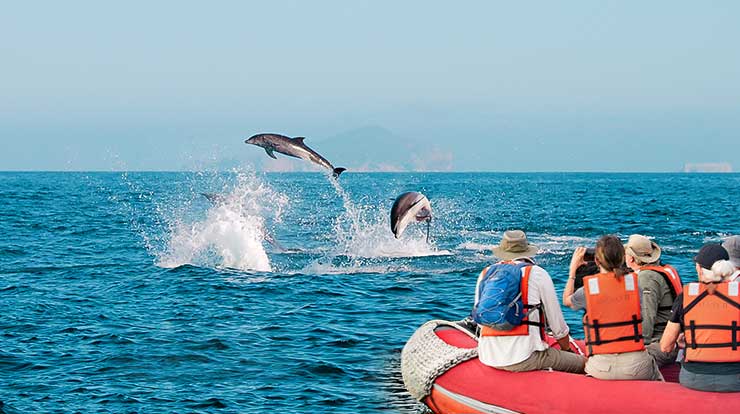
Spotting marine fauna around the Galapagos Islands.
THE BEST TIME FOR PRACTICE ACTIVITIES IN GALAPAGOS
During your visit to Galapagos, you will be able to enjoy different activities to get to know the fauna and flora of Galapagos in detail.
However, as we mentioned before, the warm and wet season is best for land activities and the cold and dry season is excellent for water activities. Which one do you prefer to practice?
Now that you know more about the Galapagos weather, it will probably be easier to choose the best time to visit the “Enchanted Islands”.
If you have already decided on a specific month, we invite you to review our best Galapagos cruise deals by clicking here.
On the other hand, if you have not yet decided on your travel date, we invite you to contact us for personalized advice. Please click on the live chat, call us toll-free or email us to [email protected] / [email protected].
RELATED POST
Sustainable Tourism and Conservation in The Galapagos Islands
Conservation and sustainable tourism projects are two significant activities in the Galapagos Islands. Why are they so essential? Find out here.
3 Tips for a Galapagos Responsible Travel
Enjoy a memorable trip to the Galapagos Islands while helping to care for its fragile ecosystem and supporting the local economy. How to do it?


